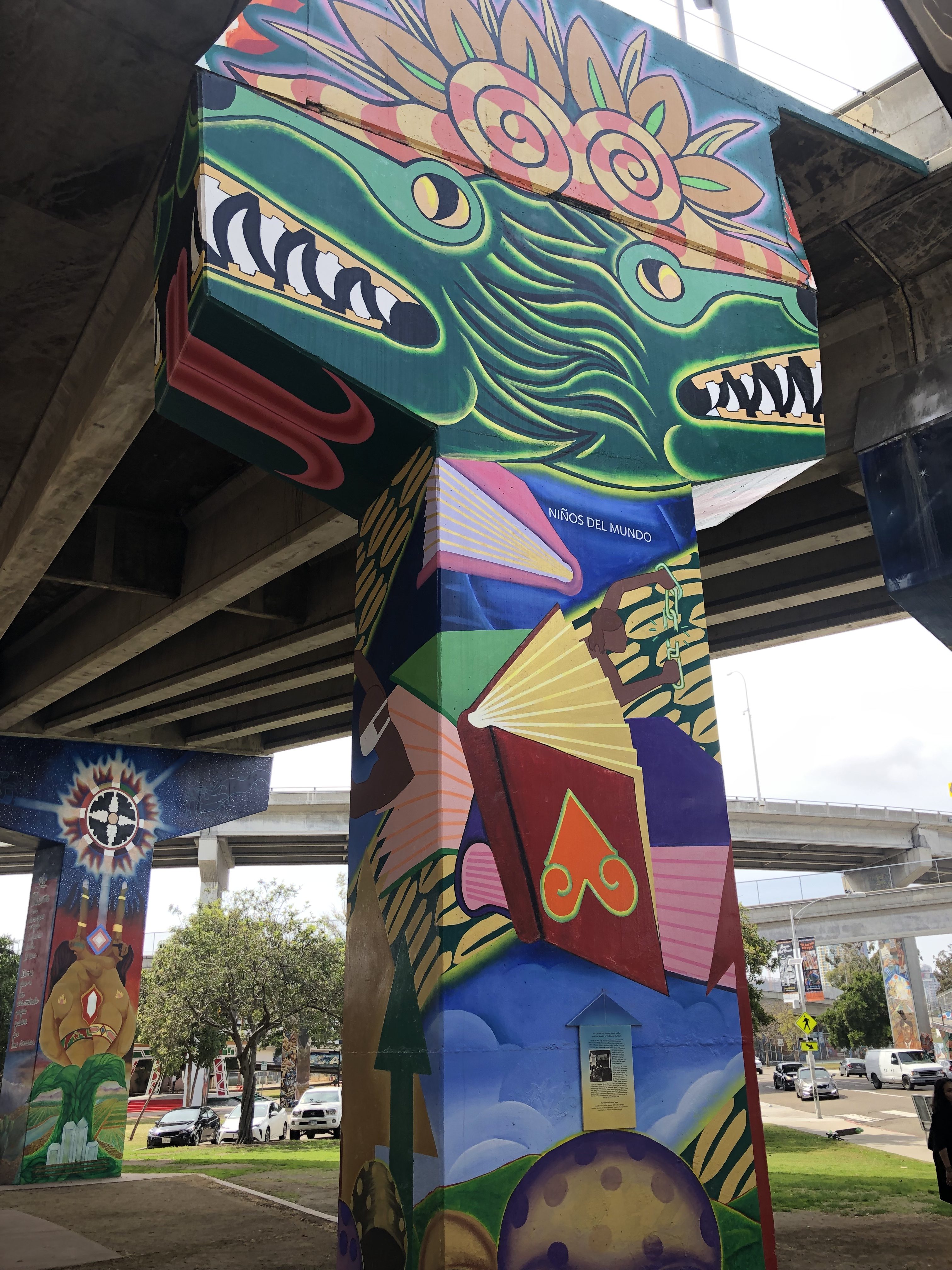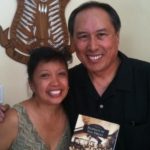Upon arriving at Chicano Park, I was in awe of the imagery presented in front of me. The murals depicted historic Latin American figures and radicals such as Diego Rivera, Frida Kahlo, Emiliano Zapata, Che Guevara, Fidel Castro, and more. The murals of the Chicano movement in Barrio Logan enable the community to take pride in the history of their own locality.
While wandering around the premise, I encountered a woman tending to the upkeep of the garden across the street from where the majority of the murals were. At first, I said nothing, but she soon approached the group I was with and began talking about preservation of the murals and the importance of the park to her own family. She told us a story of how her father was one of the original artists that painted the towering columns of the overpass that characterize the landscape. At one point she jokes that she was conceived at the park but would prefer not to know where. Afterwards, we learned that she restores some of the murals that are victims of tagging.
“Don’t these guys understand? This our culture. This is what we should be proud of. You don’t just do this to the murals, man. It’s ridiculous.” She laments. Her voice was filled with indignant pride. She stood proud as she talked about the various cactus species and trees planted around the park. Chicano Park was her park and represented the cultural heart of her community.
This is when I realized that Chicano Park was alive. It is is not a relic of the past, a product of protest from the 1970’s and 80’s on display. It meant much to the community today. And after this encounter, walking around the park, I understood why the park needed to exist. It is a living symbol of defiance and pride for the Mexican American community of Barrio Logan.



